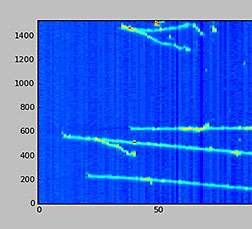New beamline provides more opportunities for particle detector R&D

Since 2005, DOE's Fermilab's Test Beam Facility, with its distinctive orange and blue corrugated-steel roof, has staged more than 50 experiments, conducted by scientists from more than 170 institutions in 30 countries.
It now offers a second beamline to provide additional opportunities for research and development.
"We're very busy and fully subscribed," said JJ Schmidt, deputy facility manager at the FTBF. "The existence of two beams allows us to serve a broader class of experiments."
The FTBF delivers various types of particle beams with a range of energies for particle detector R&D. It is one of only two sites in the world that provides this service with high-energy hadrons, which are particles made of quarks.
The additional beamline allows DOE's Fermilab to serve a larger number of users, and it also provides room for a greater diversity of experiments. While the first FTBF beamline supports experiments with a turnover of about one to four weeks, the second beamline caters to R&D experiments that need to take data for many months.
Accelerator operators started using the new beamline to send particles to its first major experiment, Liquid Argon TPC in a Test Beam, on April 30.
The first spill of particles immediately produced picture-perfect tracks of charged particles in the R&D detector, which will help scientists advance particle detector technologies for neutrino experiments, including the proposed Deep Underground Neutrino Experiment.
Provided by Oak Ridge National Laboratory



















